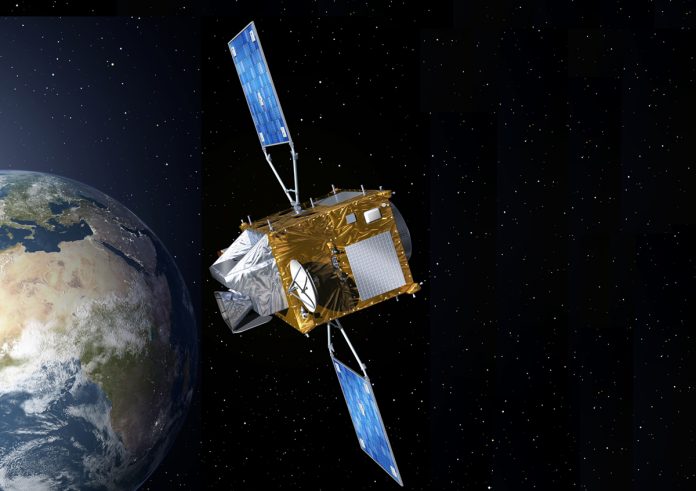Ugo Cortesi (IFAC-CNR), on behalf of the AURORA Consortium, explains the synergistic use of atmospheric data from space
The launch of the Sentinel-5 precursor satellite on October 13th 2017 heralded a new phase of operational monitoring of atmospheric composition from space, which is going to reach its full deployment with the acquisition of first real data by Sentinel-4 and Sentinel-5, the atmospheric missions of the ESA/EU Copernicus programme, envisaged to take place by 2023.
An unprecedented quantity and quality of satellite and non-satellite measurements of key gaseous compounds and particulate matter in the Earth’s atmosphere will become available, making it possible to develop applications and services, ultimately to address the increasingly complex challenge of protecting the environment and security using data from space.
A demanding project, funded by the Horizon 2020 framework programme of the European Union, began in 2016 to explore the potential of the information content concerning the new number of observations that were made possible by exploiting the synergy of data from space and the synergy of tools.
The AURORA (Advanced Ultraviolet Radiation and Ozone Retrieval for Applications) project is conducted by a consortium, led by CNR-IFAC (Italy) and includes the major scientific institutions in the field of atmospheric sciences in Europe, such as BIRA-IASB (Belgium), ECMWF (United Kingdom), FMI (Finland), KNMI (Netherlands) and outstanding SMEs like Flyby (Italy), Epsilon International (Greece), 52Impact (Netherlands) and S&T (Netherlands).
The novel idea at the core of the AURORA project is, in fact, to test the application of state-of-the-art assimilation models on the results of innovative data fusion techniques, capable of combining the information from measurements of the same air mass simultaneously acquired by ultraviolet, visible and thermal infrared instruments onboard geostationary and low earth orbit platforms, such as Sentinel-4 and Sentinel-5, respectively.
Rather than looking at data fusion methods and data assimilation systems such as alternative tools for combining redundant and/or complementary information on the state of a given variable from multiple measurement sources, AURORA investigates – for the first time to our knowledge – the sequential application of data fusion and data assimilation to atmospheric remote-sensing observations.
The atmospheric target selected for testing of the AURORA concept is the vertical profile of ozone from the Earth’s surface to the top of the atmosphere. The choice of ozone was motivated both for the key roles it plays at different altitudes in the atmosphere as a major absorber of ultraviolet radiation and as climate forcer and pollutant, as well as for the significant benefit expected from synergistic use of its observations in different wavelength ranges.
Intermediate and preliminary results obtained on synthetic data of the atmospheric Sentinels demonstrated the advanced quality of fused products, with respect to standard retrieved profiles and first outcome of assimilation of these fused data highlighted non-negligible differences between the assimilation of fused and standard products.
It is worth mentioning that, along with other experiments running the assimilation of data from the atmospheric Sentinel missions, a specific test will be devoted to estimate the impact of assimilating standard ozone profiles retrieved by the TEMPO (Tropospheric Emissions: Monitoring Pollution) and GEMS (Geostationary Environmental Monitoring Spectrometer) geostationary missions, whose coverage of North America and Asia-Pacific region, respectively, is complementary to that of Sentinel-4 over Europe, thus providing the first constellation of operational geostationary satellites for air quality monitoring in the Northern hemisphere.
Completion of the planned set of assimilation experiments on the selected dataset of simulated observations (four months) aims to consolidate and validate the output of the AURORA data processing chain, with the twofold purpose of contributing on the one hand to the efforts for upgrading synergistic data from research to operational products, and to the other of developing a technological infrastructure which is capable to run the data processing chain of AURORA using synthetic measurements now and real data from space as soon as they are distributed.
Although the transition from simulated to real data processing is far from being a straightforward step and necessitates a substantial volume of additional workload, the on-going activities deliberately included among their objectives, the delivery of a few applications based on the use of AURORA Ozone profiles and derived products, such as the tropospheric ozone columns at the lowermost levels of the atmosphere and the ultraviolet radiation reaching the surface, for demonstration purposes. Two applications, in particular, will be tested on the AURORA products, both of which are of interest to the health sector. The first one, HappySun, is a personal UV dosimetry already available on smartphones and operates on the basis of information obtained from spaceborne sensors. The second one, AirPortal, aims to monitor and forecast air quality in urban areas at the resolution of 100m x 100m, by combining data from space and ground stations with information on land usage and meteorology. Other sectors are also under consideration for development of further applications with the underlying intent to exploit the potential added value of the AURORA advanced quality data.
As part of the initiatives for communication and dissemination, constantly updated in the news section of the project website and mirrored in synthesis in the AURORA list of publications, it is important to highlight the contribution to the New Scientist Live event 2018 (London, UK), as well as the publication of a Call for Ideas for university and high school students in the member states of the European Union.
More details and material about the various aspects of the project can be found on the AURORA official website.
A video displaying a general introduction to the objectives and scope of AURORA activities is also accessible here, which includes interviews with representatives of key actors in the AURORA project.
AURORA web-site:
http://www.aurora-copernicus.eu/
AURORA video:
http://www.aurora-copernicus.eu/video
Please note: this is a commercial profile
Dr Ugo Cortesi
Research Scientist
IFAC-CNR
AURORA Consortium
Tel: +39 (0)55 5226368











